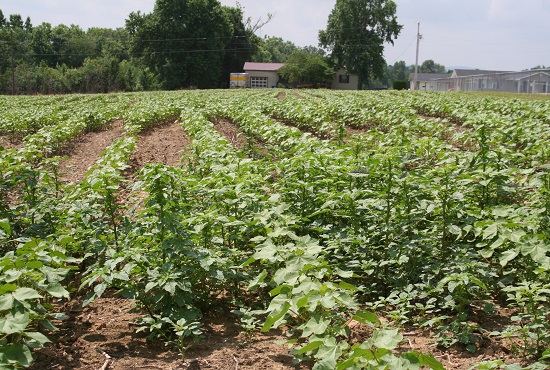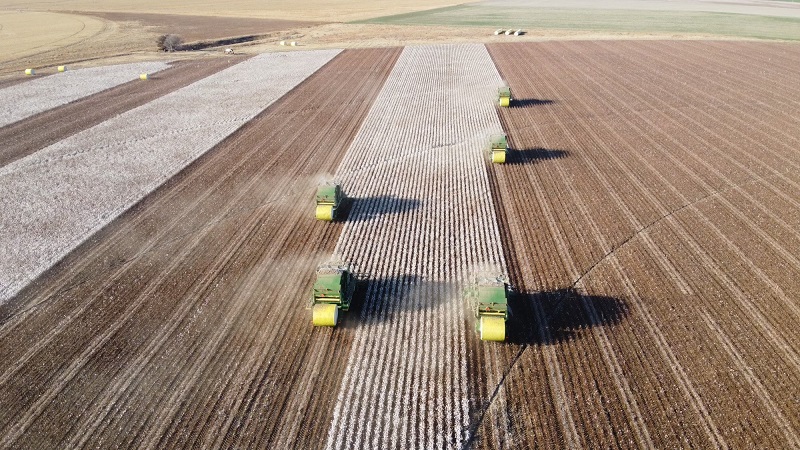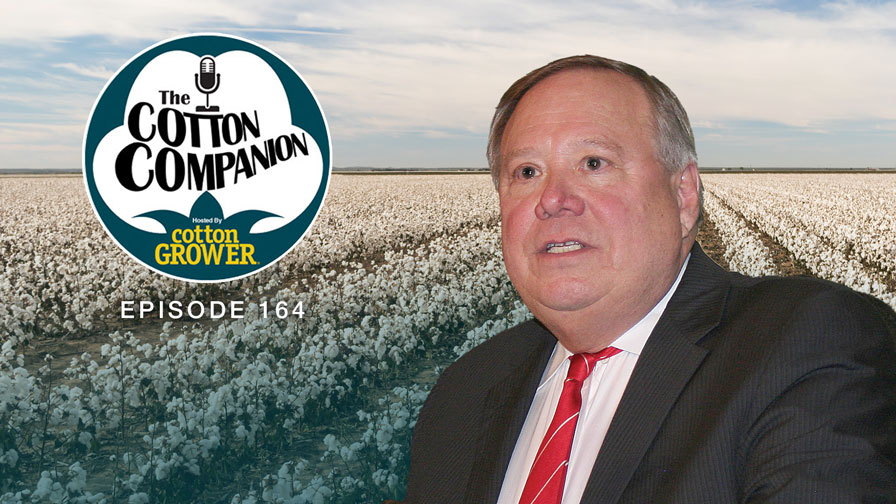Leadership in Cotton Is about More than Size
What is leadership? This is certainly a question for the ages.
When it comes to cotton, leadership may mean having the world’s largest cotton area – and that would be India. Leadership might mean being the largest cotton fiber producer or cotton textile manufacturer – and that would be China, in both cases.
There is leadership in cotton fiber exports, and the United States has managed to hold that lead for decades. Another area for leadership is cotton uptake at retail – an edge held by the U.S., EU and Japan, but whose lead is likely to fall by the wayside as China and India come into their own as consumer societies.
Yet all of this leadership will be for naught if cotton is marginalized as a major fiber because of synthetics.
Just when it appeared as though cotton was rejuvenated this past decade and cotton’s share was again on the rise, the so-called “Great Recession,” and this past year’s huge volatility in price and export policy, dealt cotton a significant blow. While a few may have temporarily gained from the turmoil, the global cotton industry lost, and lost big time.
Global cotton consumption is down 6% in the past three years, futures are no longer reliable as a hedging mechanism, yields are stagnating as current technologies are maxed out, and defaults permeate the trade from fiber through finished goods.
Brands and retailers that had never questioned cotton’s availability are no longer sure that it is a reliable input in an era of agricultural supply scarcity.
So why are we still bullish on cotton and cotton’s leadership?
Leadership will be found (or not) in what we do during this crisis. Real leadership in cotton means taking actions to ensure our fiber is relevant and growing in demand because consumers desire it and are willing to pay for it. True leadership is also taking action to keep our industry competitive throughout the supply chain – from fiber through processing to retail and to consumer – while at the same time minimizing its environmental impact.
Back to Basics
At CCI, we are confident in the fundamentals of the fiber, the consumer and the institutions.
World demand for fiber is expected to rise three to fourfold between now and 2050. What role cotton plays in filling that demand will largely depend on what our industry does to ensure supply and remain competitive – but it is certainly better to be selling into a rising market than a declining one. There is no question that we are in a rising long-term market for fiber overall.
CCI and Cotton Incorporated research continues to show that consumer preference for this natural fiber remains very strong. When asked about their fiber preference, six out of 10 consumers globally prefer cotton, and 50% say that cotton is the best fiber for today’s fashion. Nearly 60% state they would pay more for natural fibers.
Cotton remains by far the leading natural fiber in demand, and although polyester in all its forms now surpasses cotton in volume, according to PCI Fibres, cotton is still the leading staple fiber in volume in the world. We need to keep it that way and expand on this lead. Cotton’s great fiber qualities that have made it a consumer favorite for generations have only improved over the years. But we need to ensure our fiber’s continued leadership in research and technology, not through reliance on historical preference or volume.
The global industry is beginning to realize that consumers cannot be taken for granted. The consumer needs to be continually reminded of cotton’s natural advantages in the face of tough competition from promotion of synthetics and man-mades.
Internationally, with the encouragement of the International Forum for Cotton Promotion (IFCP), new consumer promotion efforts are popping up in key developing markets such as China, India and Brazil, while existing demand enhancement programs – such as those carried out by Cotton Incorporated and CCI – continue and are further refined to better compete with other fibers and products for the consumer’s disposable income.
One example is Cotton Incorporated’s success with the brand Under Armour. Cotton Incorporated successfully made cotton a core material for a company that, until recently, referred to cottton as “the enemy.” Innovative technology and good marketing are responsible for the uptake of tens of thousands of bales of cotton that would not otherwise have happened. Day by day, Cotton Incorporated and CCI are pursuing similar opportunities around the globe to the benefit of all who depend on cotton for their livelihood.
Without the consumer, our industry is a dying one. For each extra bale of cotton pulled through the supply chain to retail, we all benefit.
Sustainability as a Science
Cotton’s leadership is further exhibited through its work on sustainability. At this time, the U.S. cotton industry is doing more than any other fiber to take a solid scientific look at sustainability and what specifically can be done to improve our industry’s performance.
The development of an international life cycle inventory (LCI) for cotton, followed by a life cycle analysis (LCA) for our fiber, is at the core of this effort. It is a very comprehensive and leading-edge endeavor that examines cotton at all stages of production, processing and even consumer care and end-of-life disposal, providing a solid basis for determining cotton’s position vis-à-vis sustainability at all stages of fiber production and use.
The LCI/LCA also serve to point out where the industry can best address issues along the supply chain that will progressively move cotton toward having an ever-smaller impact on our planet and its environment. U.S. cotton already has a solid record of environmental responsibility and leadership.
Our research shows that consumers globally already believe cotton is the most environmentally benign fiber, and we are doing everything possible to ensure that all cottons meet those consumer expectations.
Another area of leadership is Cotton’s Revolutions, a strategic initiative started by the U.S. cotton industry. It has the potential to lead the global cotton industry through the challenges of coming decades.
Cotton’s Revolutions seeks to bring together leading thinkers at the highest levels along the supply chain and throughout the global cotton industry to exchange knowledge and vision. This communication will stimulate timely changes in technology, information, governance and consumer interface that will enhance performance and profitability specific to cotton-related businesses.
One clear example of the potential of this effort is the timely exchange of information as the industry passed through the recent volatility crisis. Cotton’s Revolutions helped to identify governance, informational and institutional constraints that added to this volatility. It has also developed ideas for possible ways to address those constraints. Now, it will take leadership from other institutions to bring about concrete actions on this and the other topics that surfaced through this strategic thinking initiative.
We believe cotton institutions remain strong and are providing solid leadership. The International Cotton Advisory Committee, Cotton Incorporated, the International Cotton Association, the National Cotton Council of America, the China Cotton Association, IFCP, CCI and many others – not to mention the many individual companies that have cotton as a base for their revenue – are leaders in innovation and change.
Although some have struggled during these past few years, cotton’s institutions globally have generally survived, and those that have gone through major restructuring appear to have come out stronger after the tough lessons of these years.
Meanwhile, new cotton institutions are popping up around the world that will surely have a positive impact on policy and industry going forward.
In the end, business leadership is not about size, volume or value – it is about thinking and acting in ways that help ensure not only the survival of an individual company, but the survival and health of the entire related industry. Cotton has faced numerous serious challenges throughout its history, including these past few years, and there are certainly more to come. Are we up to those challenges? Our industry literally depends on it!








